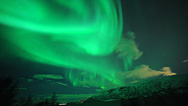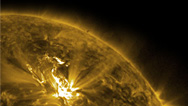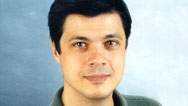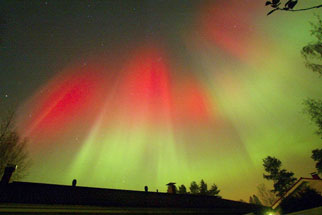Northern Lights
- By Lexi Krock
- Posted 07.01.08
- NOVA scienceNOW
Auroras, those luminous, deeply mysterious curtains of light that grace polar skies at night, occur when a space weather event energizes the magnetic field shielding the planet. This process churns up electrons and protons, causing them to smash into the upper atmosphere's mix of gases. In this slide show of auroral displays, view the spectacular result of such collisions.
Credits
Images
- (borealis over Finland)
- © Pekka Sakki/epa/Corbis;
- (borealis over Iceland)
- © Torleif Svensson/Corbis;
- (borealis over Alaska)
- Paul A. Souders/Corbis;
- (australis over Antarctica)
- © NASA; (Earth at night) © W. Sullivan/Photo Researchers;
- (ultraviolet image)
- © NASA/Photo Researchers;
- (North Pole from space)
- NASA/Photo Researchers;
- (Jupiter aurora, Saturn aurora)
- © NASA/Hubble Space Telescope;
- (animated auroras)
- © NASA/Goddard Space Flight Center and The University of Iowa
Related Links
-

Can scientists unravel the mysterious phenomena that lurk between Earth and space?
-

Behind the dazzling display of the aurora borealis are space storms that could turn the lights off here on Earth.
-

Research solar storms using images from NASA telescopes; share your work; and find out about careers in science.
-

Vassilis Angelopoulos, team leader of NASA's THEMIS mission to study auroras, answers viewer questions.
Close
You need the Flash Player plug-in to view this content.








